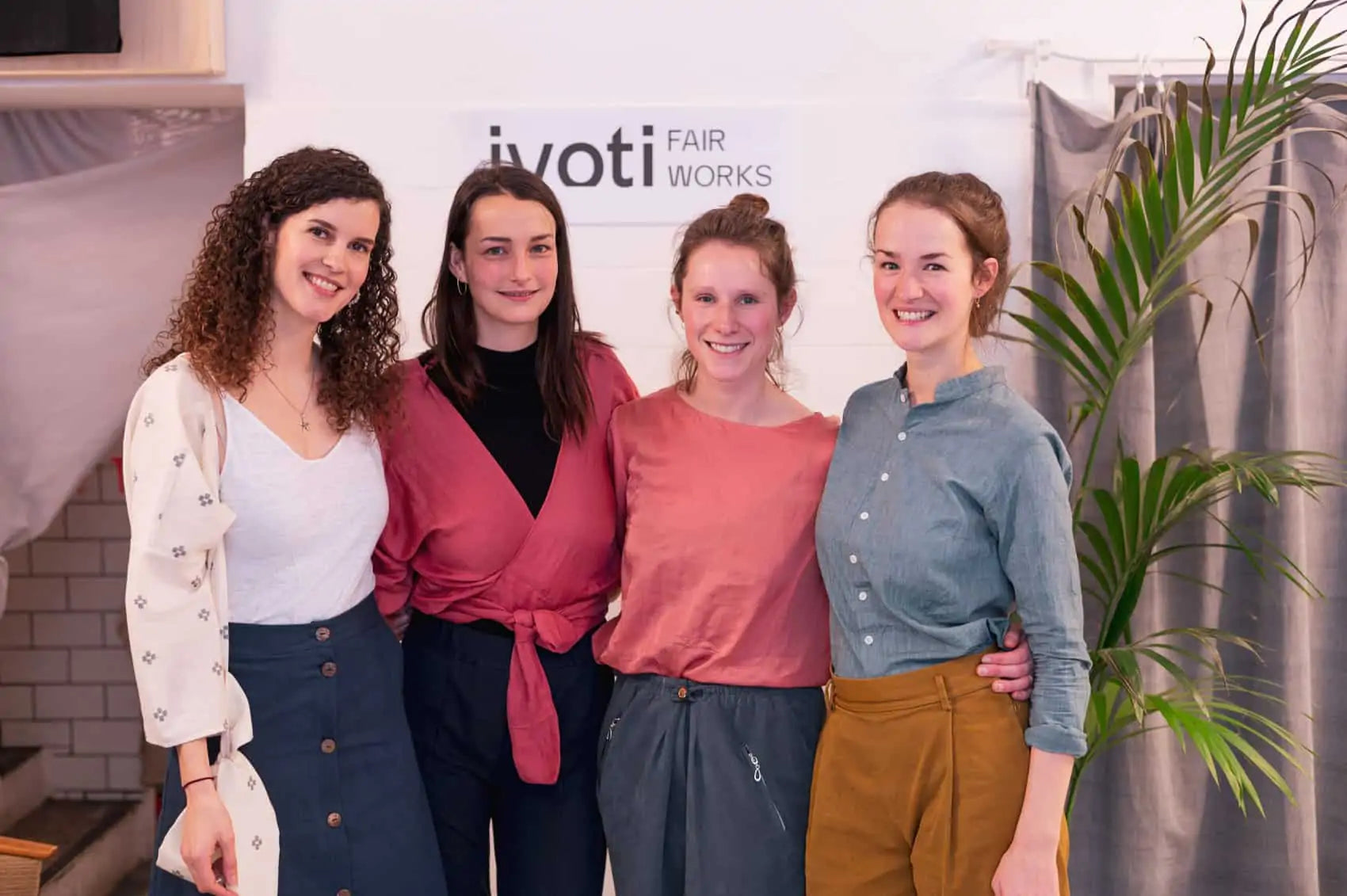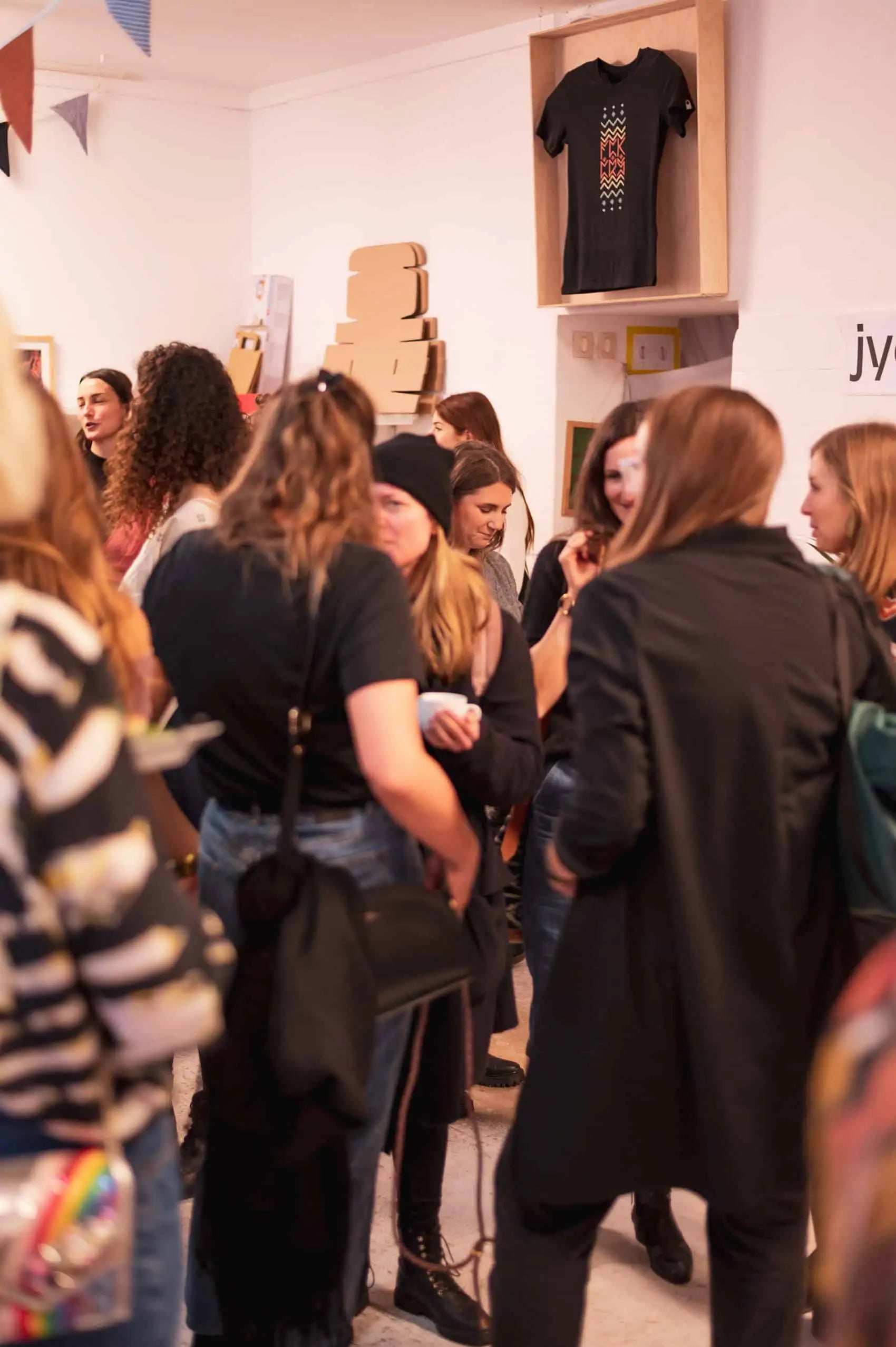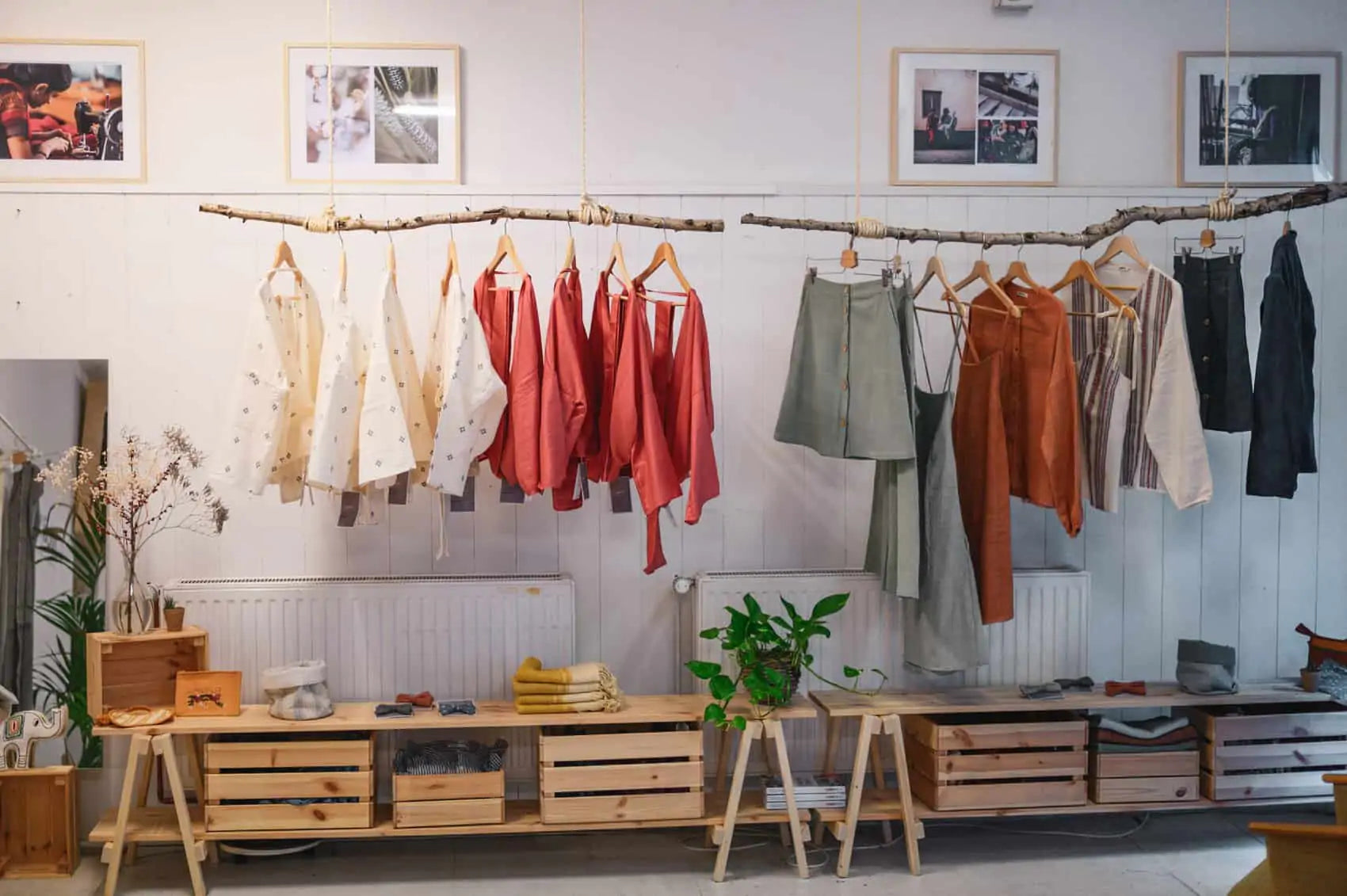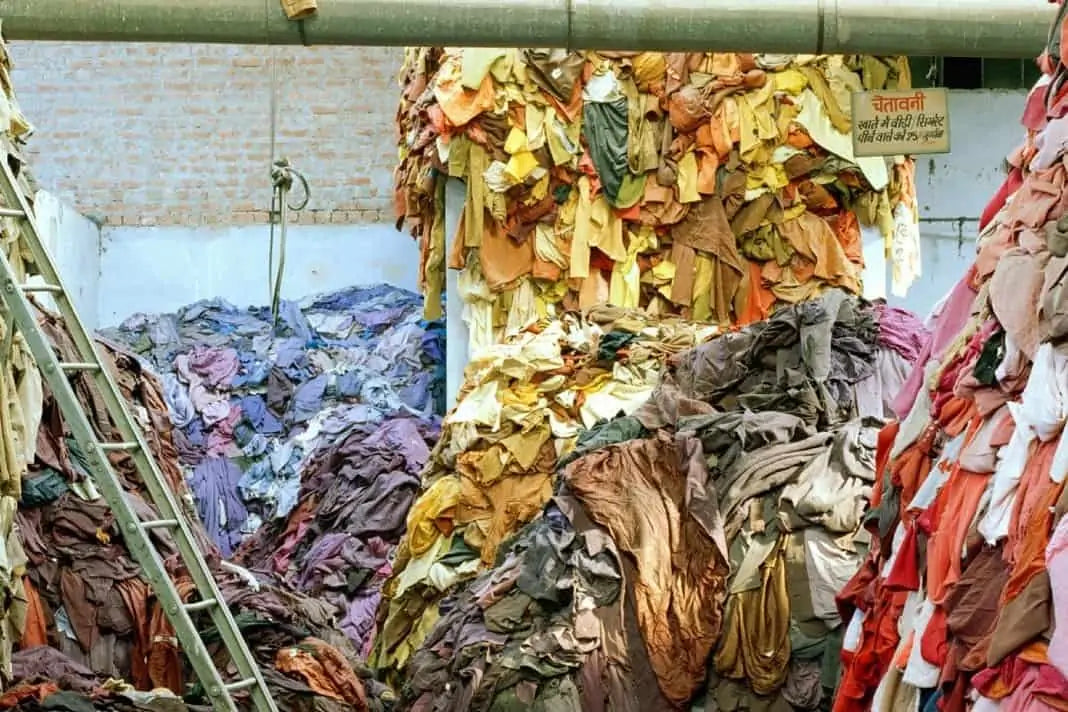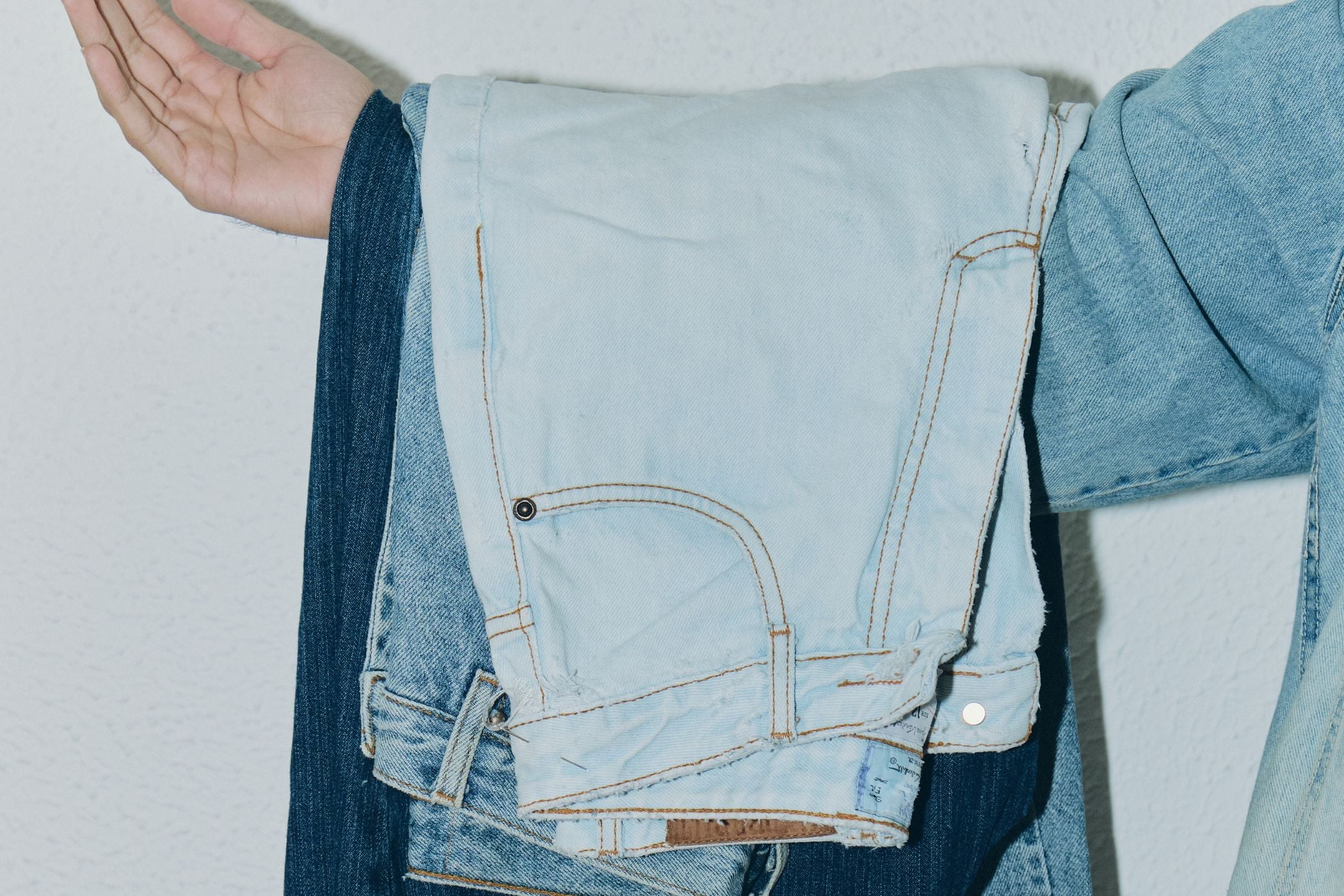JYOTI X HEYLILAHEY
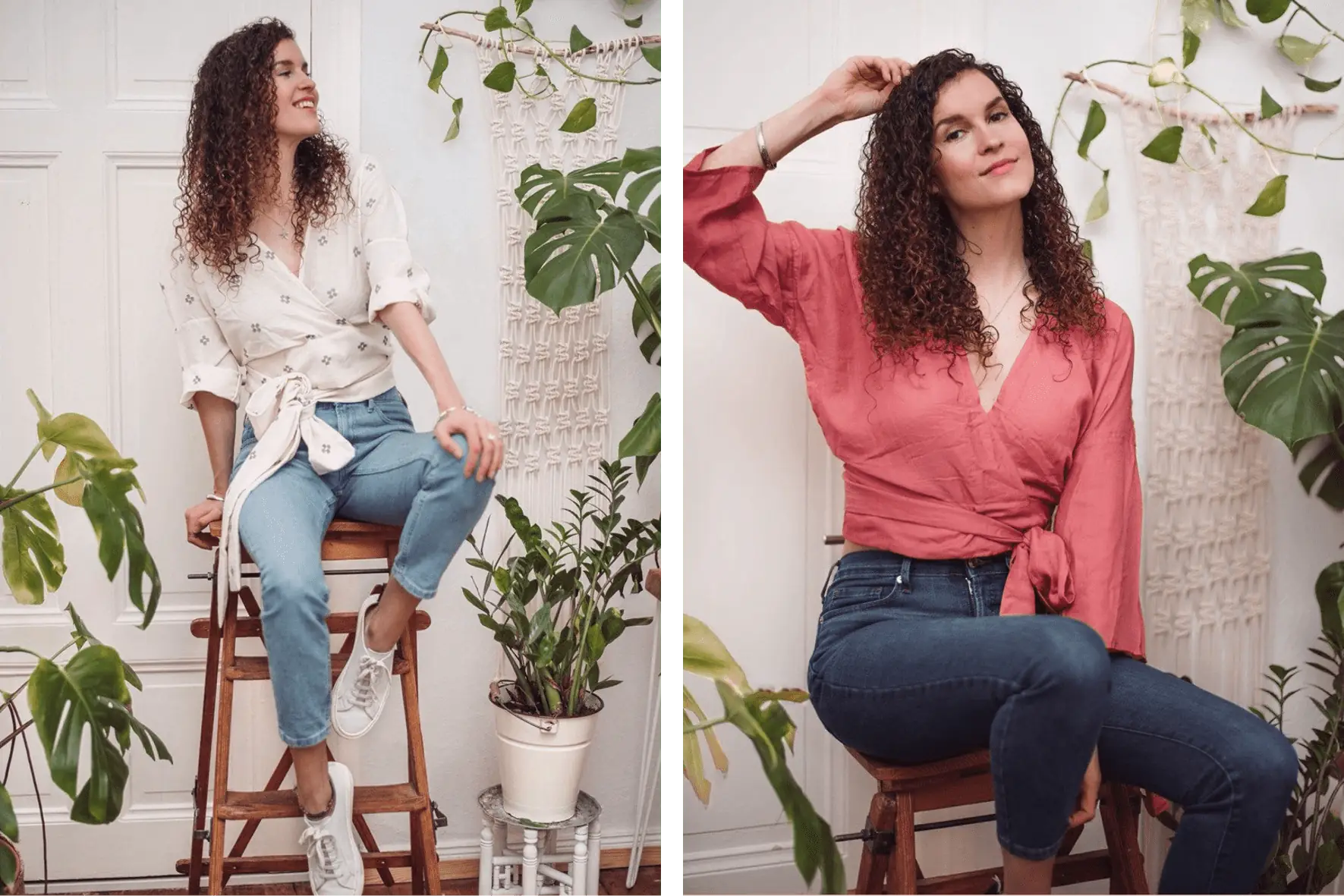
When a fashion blogger and a German-Indian fair trade label come together, a real zero-waste combination talent is created - our wrap blouse Winu.
In December 2017 we got together for the first time (yes!! That's how long it takes for an idea to become a finished piece of clothing, there's a lot of work involved). We are Caro, Jeanine and Mareike from Jyoti and Mia from HEYLILAHEY , a blog for fair fashion, vegan nutrition and sustainable living in general.
It had to be a very special piece, sustainable in every respect and of course still a real eye-catcher. We agreed pretty quickly that it should be something to wrap around, a piece that flatters all body shapes instead of excluding them, a piece that can be combined in many different ways and thus becomes a long-term companion - after all, the question of "how often" we wear something is very relevant with regard to the ecological balance of our clothing.
But let’s start from the beginning: what does zero-waste actually mean?
Translated, zero waste means nothing other than "zero waste". In relation to textiles, it describes a production process in which no waste is produced, i.e. none of the resources used are wasted. Sounds logical - why should you waste the laboriously obtained materials that require a lot of energy and even more water?! In fact, in conventional textile production, around 30% of the fabrics are sacrificed for cutting. As with baking cookies, patterns are placed on the rolled-out fabric and punched out by machine. Since properly aligning the "shapes" or reusing the leftover materials costs more money than simply using more fabric, little work is invested in arranging them as sensibly as possible and the fabric that is not needed is simply thrown away.
It's different for us. It always has been.
Because the ladies in India cut each of our pieces by hand and can therefore always look for the optimal arrangement, only tiny pieces of leftover material are left over. So far we have made these into accessories and the tiny ones into pillow fillings. Now we have taken it up a notch with the wrap blouse.
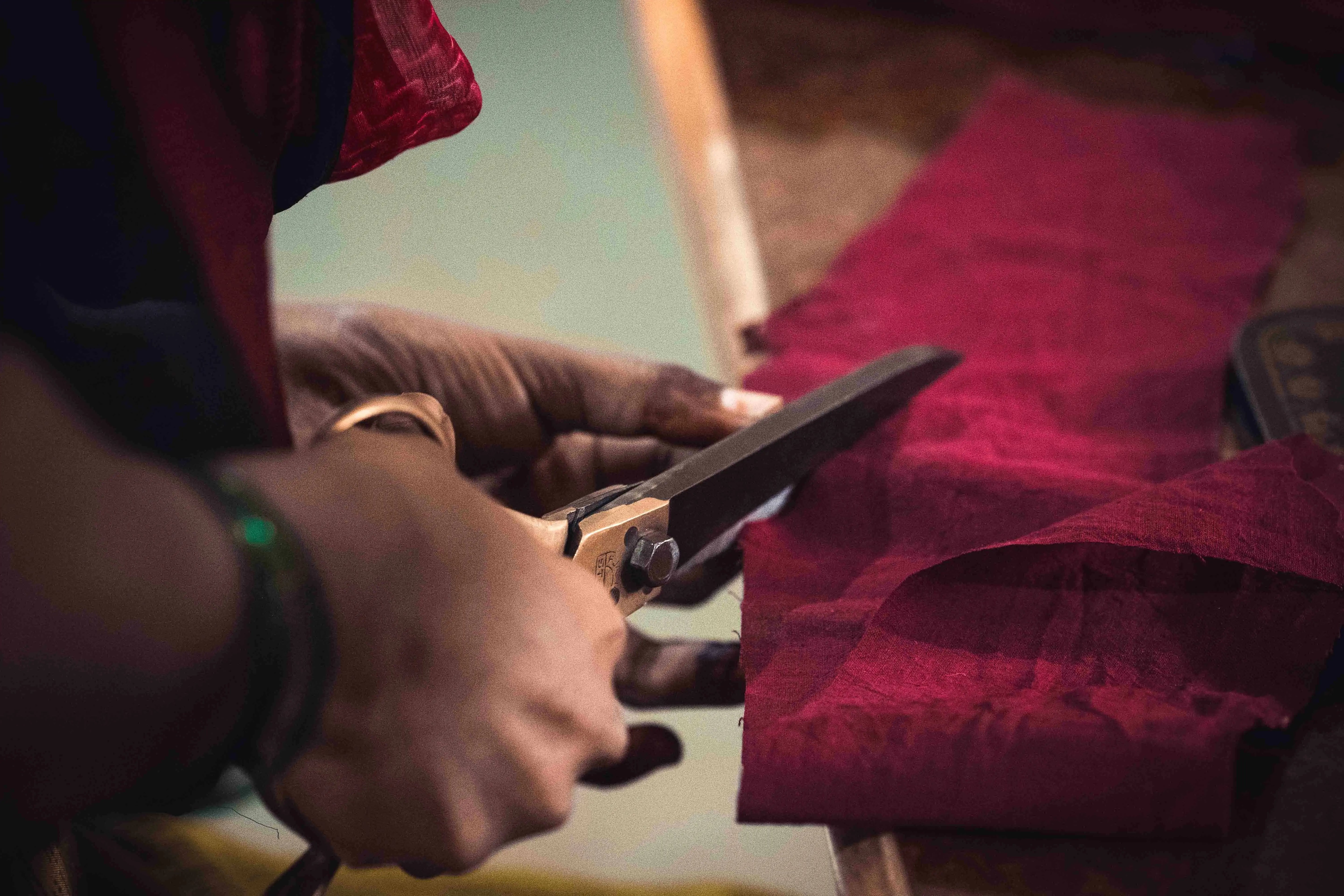
Consisting entirely of rectangles - based on the cut of Japanese kimonos - Mareike managed to adapt the blouse cut to the width of the fabric so that not a single piece of fabric was left over. Of course, there was a lot of work involved, but this technique, in addition to the ecological aspects, had the advantage of perfectly matching Mia's ideas and wishes.
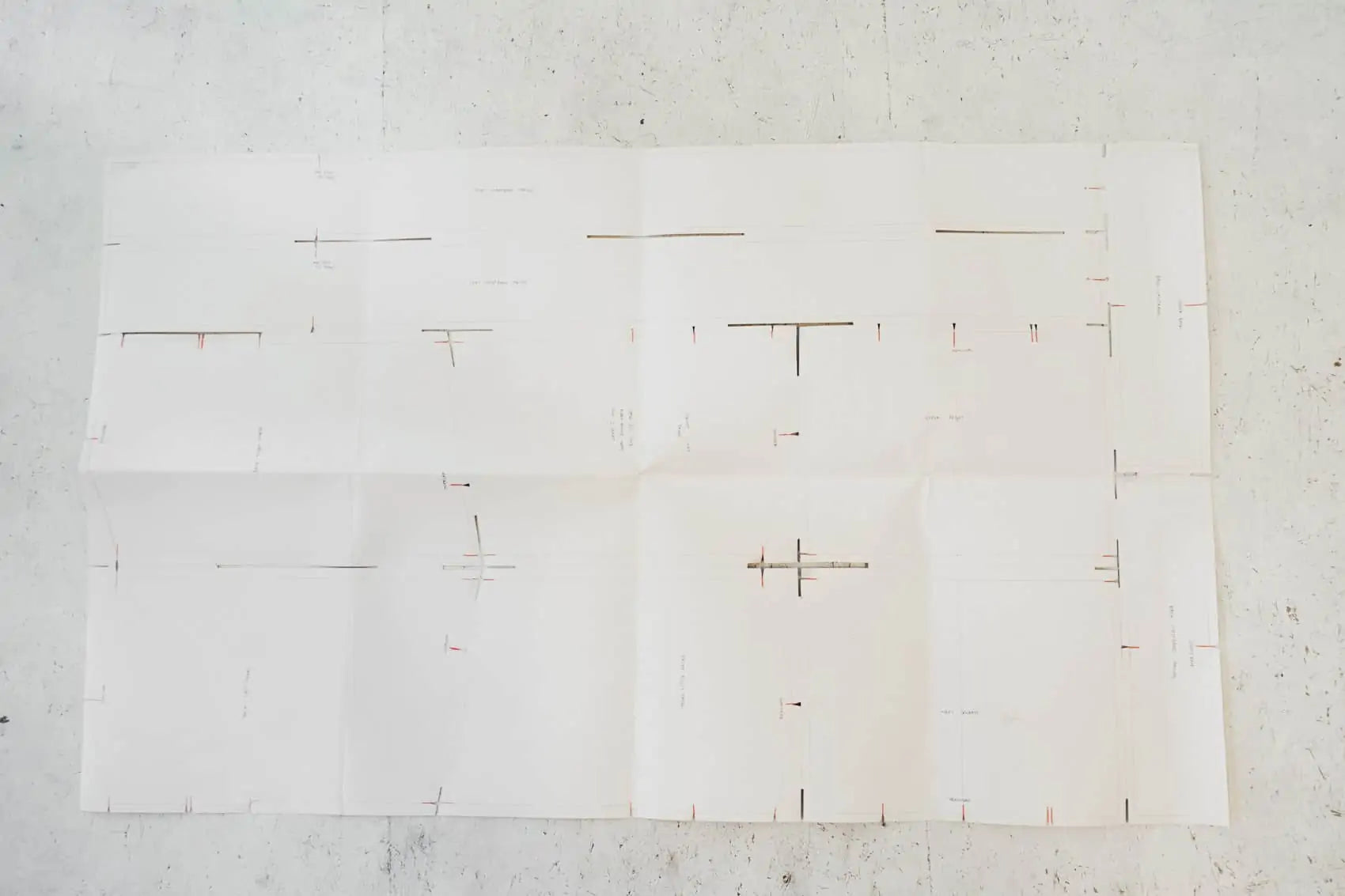
This means that the blouse can be wrapped not only forwards, but also backwards or casually styled as a cardigan – a real all-rounder that enhances absolutely any outfit =)!
Sustainable materials
Another special feature is the fabrics of the two designs. The cream-colored fabric with the small geometric patterns is a very special creation. It was created through a combination of Mia's wish to choose a pattern that reminds us of her Serbian origins and Weber Kanti's interpretation of the same. We were immediately impressed! Thanks to its cuddly soft structure, the fabric, which is made of hand-woven cotton, is also wonderfully soft.
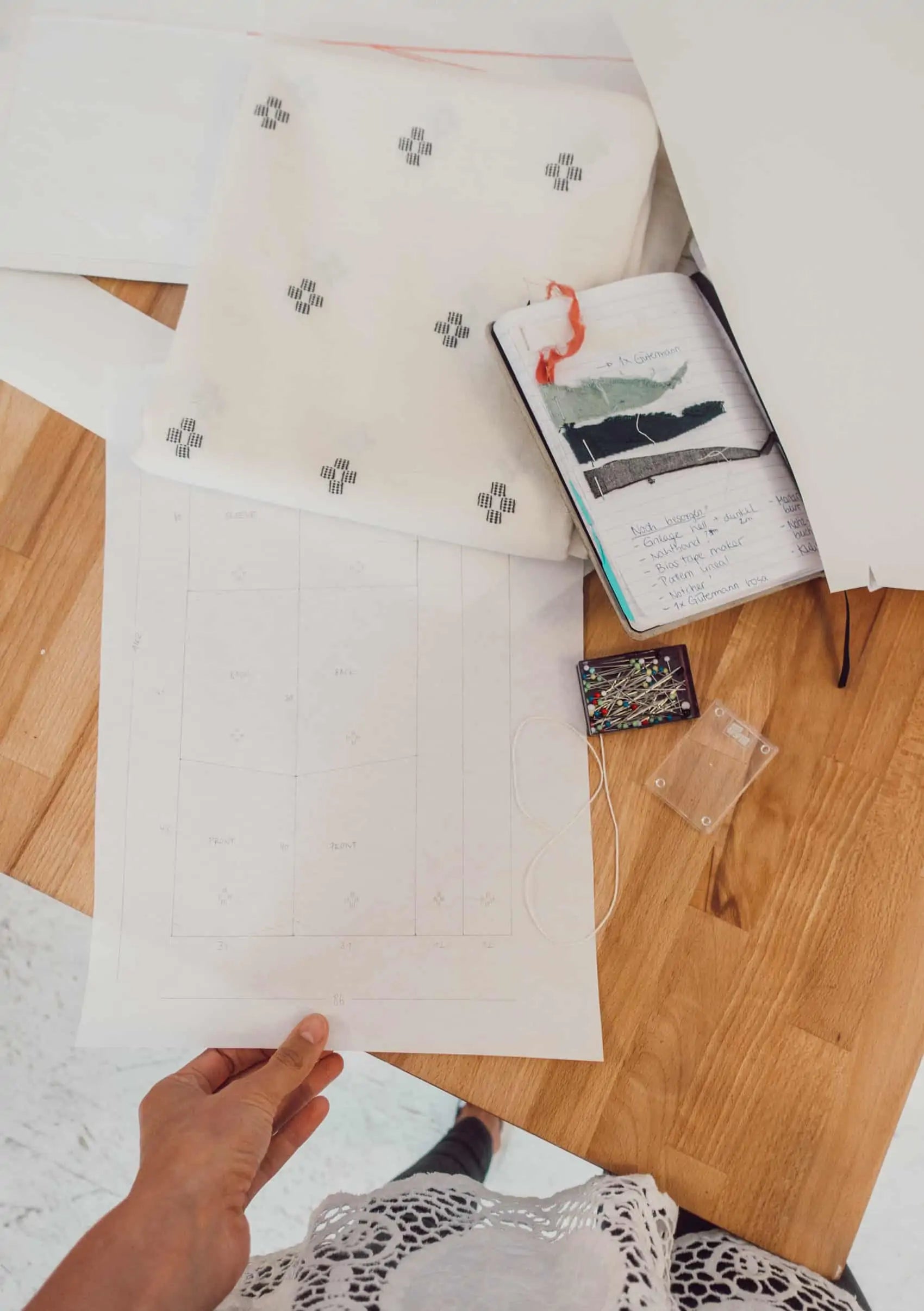
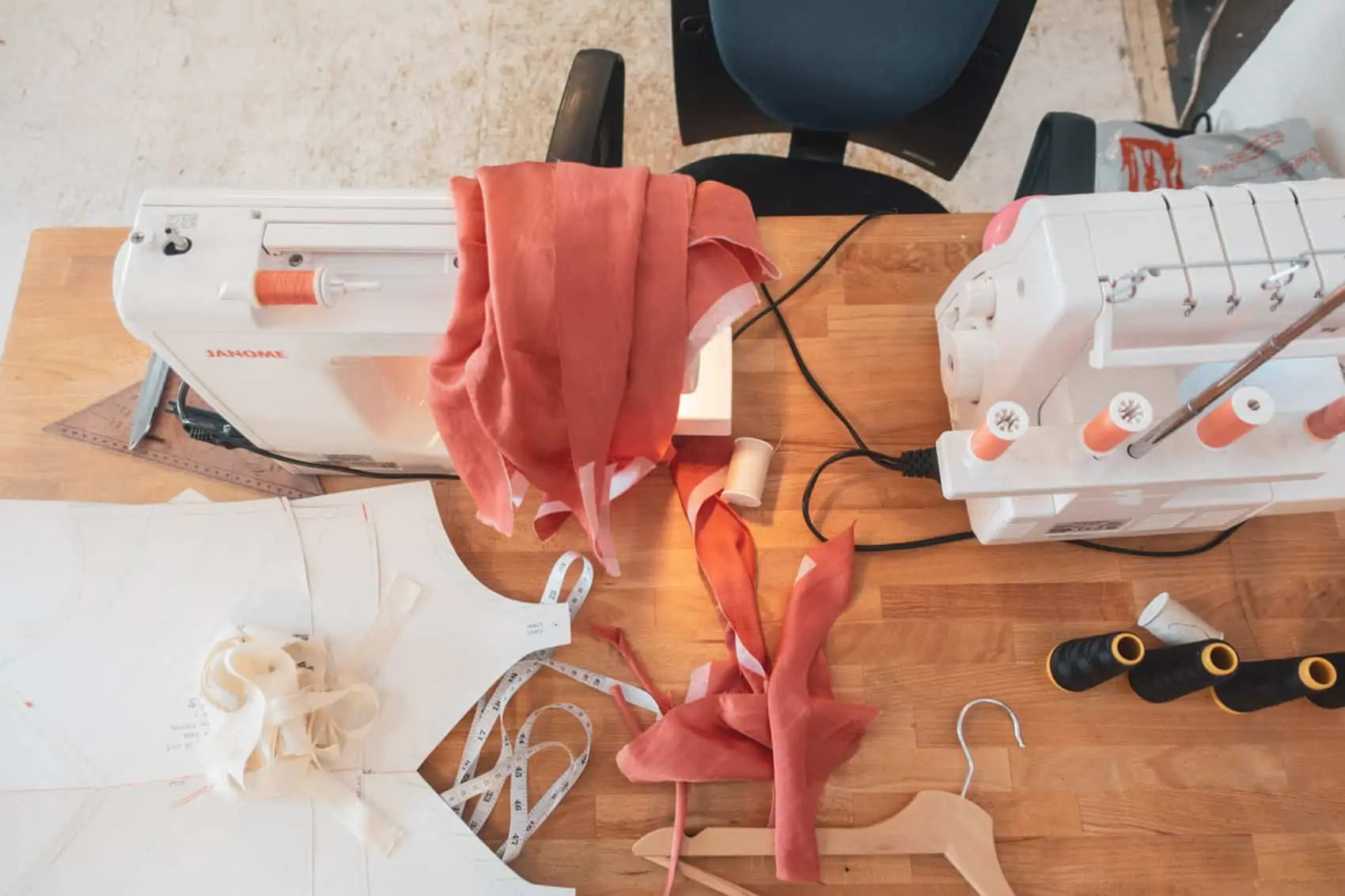
The raspberry-colored fabric is made of 70% GOTS-certified cotton and 30% so-called peace silk, i.e. silk that is produced without harming the caterpillars. The silk content gives it a wonderful shimmer and it is wonderfully light and flowing.
We had a lot of fun working together in this way and it motivated us to look for a zero-waste option for each of our pieces in the future.
